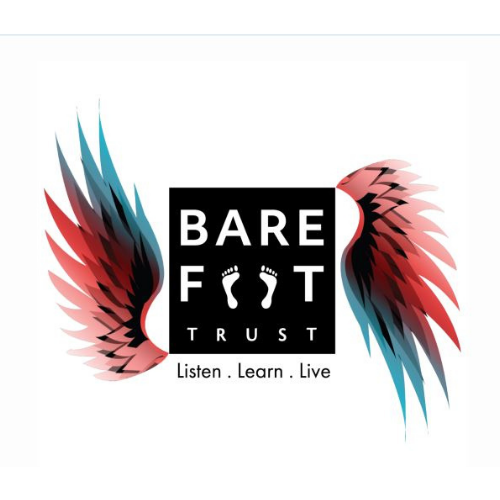“India has joined the ‘nuclear club’ of nations of the world.”
This was the news that captured the attention of Indian citizens and people all over the world in the years 1998-1999. On 11th May, 1998, India successfully launched its first nuclear test. Now, every year this day is observed as National Technology Day.
Technology is now a need…
As a first-year student in college, I grew up with and have access to the common technology we have today. Computers, laptops and mobile phones become an important part of the education system in the higher levels. But with the pandemic, all these have become a need, no longer a mere want. Being able to have online classes has been a great advantage in terms of health. It can be difficult to maintain social distance in a class with over a hundred students. Online classes enable us to get the lectures and materials we need while at the same time preventing the virus from spreading, at least within the campus. I may have more access to internet because of my online classes, however, this has not brought me closer to any real learning experiences. Those students who are fortunate to have all this technology however, are also deprived of the joy of interacting with those who are physically present around us. I, like others who live in the urban areas, always have access to our classes and lectures. But others may find it difficult to have access to internet at all times. We have weekly lectures for some departments every Saturday, and those who have easy access to the internet can easily attend these lectures but those students who have decided to spend the lockdown in their hometowns always find it difficult to join in on the live lectures. Their hometowns may have electricity, or cars, or phones. But internet service is difficult to find. And for my classmates it has become a weekly struggle to attend the live lectures.
.. yet we are no longer advancing…
Why do we observe National Technology Day when the only thing the country has achieved is becoming a ‘nuclear nation’? That means nothing in the face of the current pandemic, does it? Technology, be it nuclear or not, ought to be utilized by the government of the country to help its people. But the government no longer has the funds to do this, or even if it does, it ignores the need of the majority of the population .
Until April, Maharashtra was the worst hit state in India. In the second week of May we are seeing a drop in the number of daily cases for the first time since the 31st of March. The number has gone below 40,000 cases daily. But now, Uttar Pradesh has become the second state in India to have an increase in daily cases. On the 10th, Uttar Pradesh recorded 21,331 new cases, which has taken the total number of cases to 15,24,767. Death tolls have risen to 15,464 with 12,54,045 patients who have recovered.
The pandemic continues to spread freely as people from the working sector have no choice but to leave their homes in search of food and other essentials, and sometimes even search for work as they are no longer able to financially support their families.
…are we?
This year, National Technology Day should not be celebrated. Instead, it should serve as a reminder to the leaders of our country. A reminder of the great achievements our country has made when her leaders are on the right path. If India has been able to become a ‘nuclear country’, then with the right efforts and support of the government, it can once again rise up out of this horror and provide for its people the proper healthcare and essentials they need .
The government can easily provide enough vehicles to transport the oxygen cylinders which are in desperate need all over the country. Yet it still reserves vehicles for the members of the government who are not affected by the pandemic, which can easily be used to help those more in need. Organizations which are on social media can be given more freedom to help as they can often utilize internet platforms more efficiently than the government bodies. The government can also use local notice systems to educate people on the pandemic and its preventive measures instead of just relaying daily news on the number of those recovered and the ever-rising numbers of affected and deaths. Besides these, citizens can also help spread true news on social media platforms, finding support and help for those in need using the same. Also, one of the most affected sectors of the country in this pandemic is the education sector. With every class being held online, those who live in their hometowns which may or may not have proper internet facilities, find it difficult to attend classes. The government has often vowed to make internet service available all over the state, so this is the perfect time to fulfill their vows. Students have never needed the internet as they do now and if the government is adamant on having classes and even yearly exams online, then the least they can do is guarantee every student access to the internet.
Only time and effort will tell.
As citizens, we have been doing whatever we possibly can to abide by the health regulations provided by our own state governments. However, the central government even though it sees throngs of people attending functions and rallies and election campaigns, it turns a blind eye to all this. Of what use are the oxygen plants? The mass production of masks and gloves and sanitizers and protective gear? The government has utilized the available technology to produce these and also the vaccine. But after all this effort, we see officials holding elections with no social distancing or masks We have influential people trying their best to donate and help but when these funds land in the hands of the government, at least a quarter or even more is taken in to line their own pockets. Or in the worst cases, the funds disappear completely with no evidence of where they have gone. Even our vaccines are given to other countries and we ourselves are now being overwhelmed by the number of cases, and deaths.
No politician will support research which will have a long-term benefit. The government will no longer help us advance. It is our responsibility now to help ourselves and others in whatever way we can. And perhaps if we make an effort to stop the pandemic, someday our technology will be able to advance once more and we may have a valid reason to celebrate and observe National Technology Day for this nation, where credit will be given to the true heroes, the scientists, doctors and every other person involved in the field. Not to our hypocritical politicians who claim credit for donating and funding the research when in truth they do nothing.


















